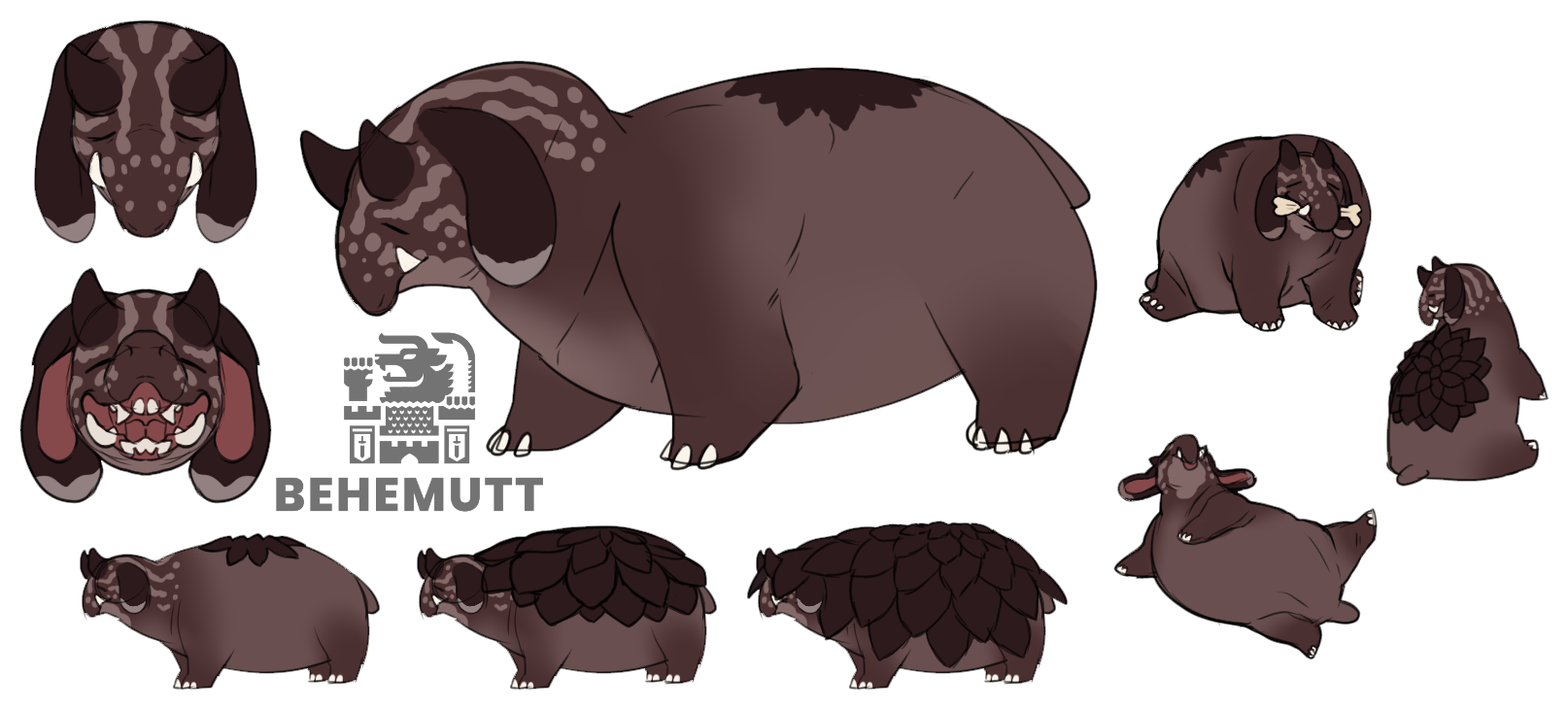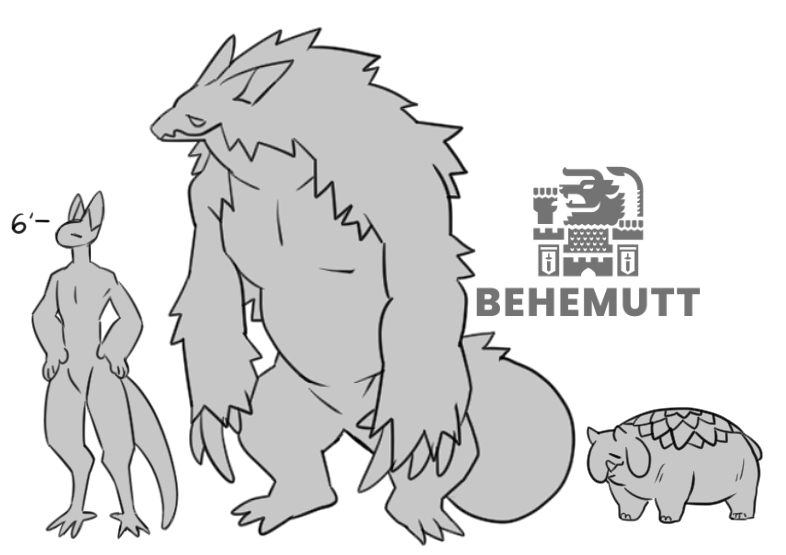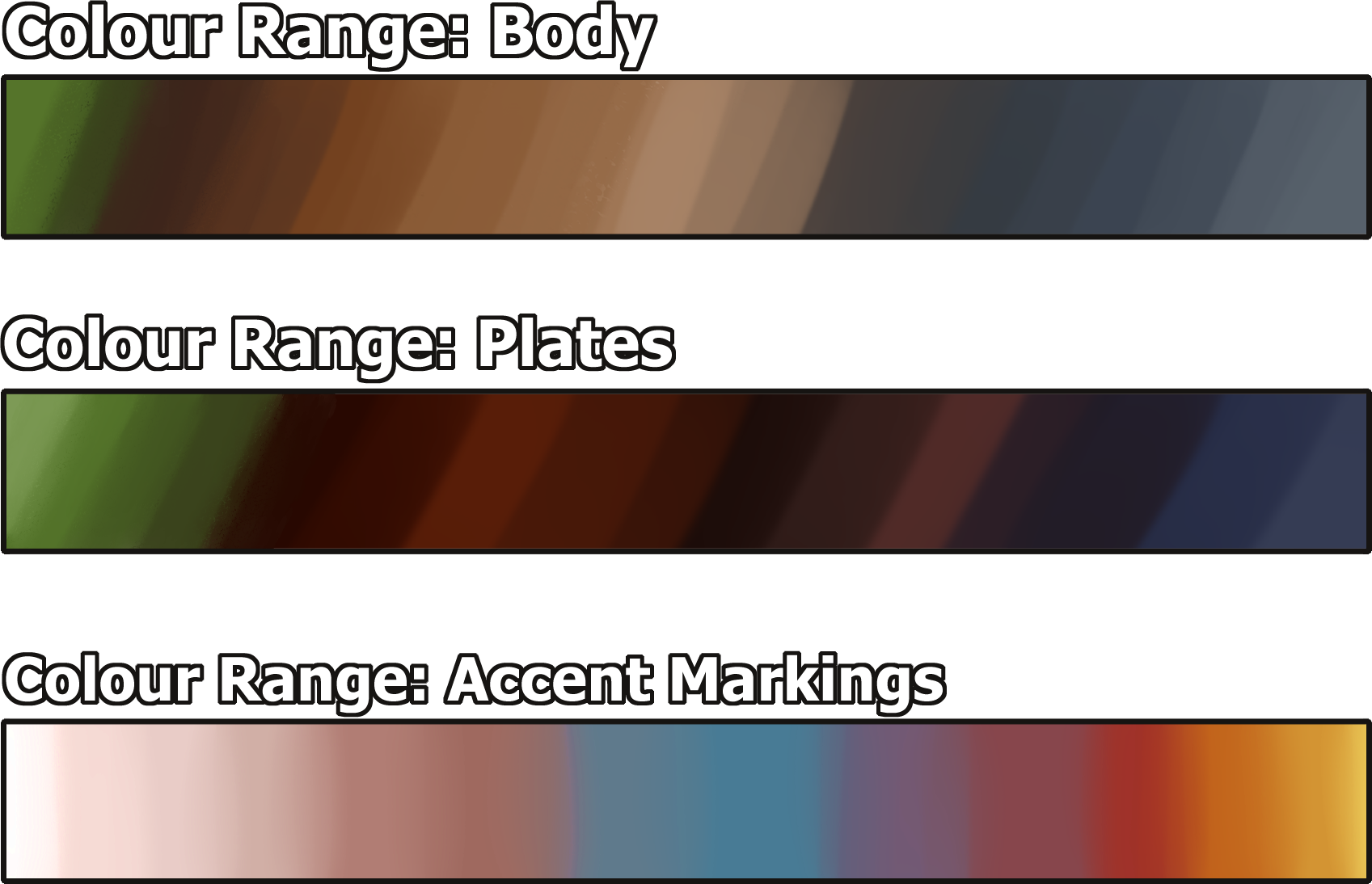Species
Plentiful Stoutan
Status: Companion
Species Availability: Closed, you cannot make your own
Introduced / Native: Native
Location: Resides on the Island of Karmos & other small parts of the southern Mezza Continent
Habitat: Heavy Jungle & Bamboo Forest
Size: 10” - 20”
Base: Plentiful Stoutan Base
You are only able to use this base if you own a ticket to create one!
-------------------------
Quick Description:
This portly animal is known for having poor eyesight but an excellent sense of smell which it depends on as it shuffles through its heavily forested environment. Stoutans are specifically known for their “armour-like” plating which grow in the form of hardened keratin over their lifetime, An adult Stoutan is completely armoured in these scales which makes them resemble the look of a pangolin or snake fruit. Their thick hide, fatty meat, tusks, horns & scales are highly sought after for hunters which has incidentally caused their populations to drop in many areas.
Stoutans require a high calcium diet in order to grow their scales, this is typically the reason for their large congregations around calcium deposits, decomposing bodies or bone piles.
Being a rather quiet and timid species, males prefer to avoid conflict, only to display themselves using their tusks and brightly coloured face markings.
Misc Facts:
- VERY HEAVY!
- Owners of this animal require supplying their Stoutan with many bones.
- Lack of calcium can cause deficiencies & prevent scale growth, making them very naked and very vulnerable.
- Has a scent gland that secretes foul odor if threatened.
-------------------------
Basic Design Rules
Plentiful Stoutans Require:
- 2 tusks
- 2 horns
- Flopping ears
- Short nails
- Back scales
- Rotund body shape
Unavailable Colours/Markings/Traits❌
- Albinism / Piebald
- Unnatural markings
- Bright colours (must be muddy and natural coloured)
Available Markings ✔️
- Melanism
- Natural Markings such as stripes, spots, gradients, rosettes, points, etc.
COLOUR RANGE
Stoutans come from very green and earthy environments, it’s significant for them to be able to camouflage in such environments to avoid predators.
The colours depicted here are loose iterations that are requested to be worked within, some deviation is allowed but if the design is too far from the natural look of the creature then it has a high possibility of being denied.
Free choice of colours on: Eyes, Mouth, Claws, Teeth





